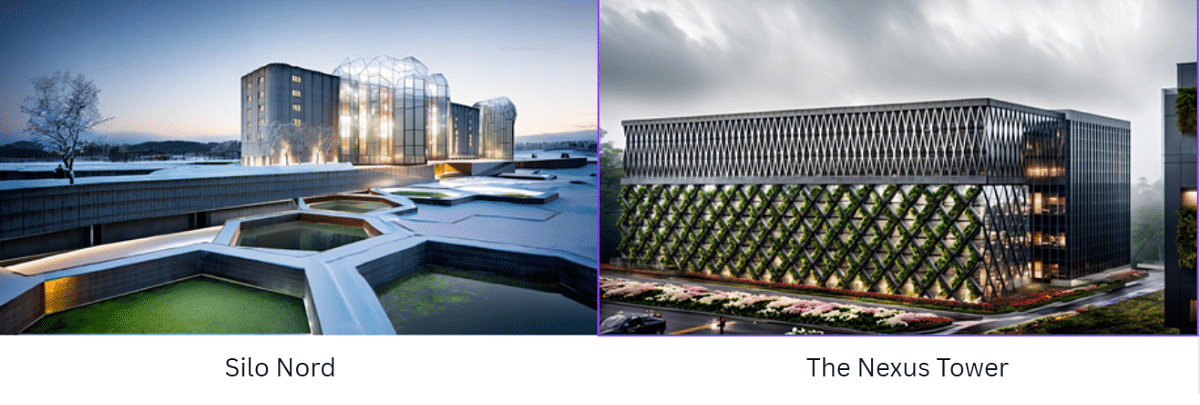As an architect and design thinker, Priya Panse views space not as static but as a living, responsive force, one that holds the power to transform emotions, identities, and human interactions. With a distinguished portfolio that includes award-winning hospitality spaces, adaptive reuse projects, and visionary conceptual frameworks, Panse’s work continually redefines the boundaries of architectural storytelling.
Most recently, Panse was honored with the New York Architectural Design Award in the category Innovative Architecture – Adaptive and Resilient Design for Climate Change for her groundbreaking project Silo Nord, reinforcing her leadership in sustainable and regenerative design practices.
We spoke with Priya about her design journey, her inspirations, and the trailblazing work that has captured the global design community’s attention.
What sparked your journey into architecture and design?
Growing up, I was fascinated by how space can carry memory and emotion, and how materials, light, and movement shape our experiences. However, it was never just about aesthetics for me; I was drawn to how architecture could respond to culture, climate, and context. That curiosity still drives everything I do today.
Your design philosophy has been described as both poetic and pragmatic. How would you define your approach?
I believe architecture is both an anchor and a mirror; it grounds people while also reflecting the evolution of society. My practice centres on creating spaces that are responsive, sensorial, and future-conscious. Whether I’m working on an adaptive reuse project or designing a hotel in a fast-paced urban context, I ask: What kind of story is this space telling? And how can that story evolve with the people who use it?
My design framework often draws from concepts like adaptive silos, a term I use to describe formerly rigid or singular-use structures that are reimagined into layered, multifunctional environments. This idea has informed many of my projects, especially those that explore spatial identity and memory.
Your project for Virgin Hotels New York received international recognition. What was the design intent behind that space?
That project was about capturing the energy and rhythm of New York itself. We leaned into bold red hues, not just as a brand statement, but as a narrative device to express vibrancy and intimacy. The interiors blur the line between private retreat and public vibrance, juxtaposing sleek modern elements with warm, tactile surfaces. The layering of textures was intentional: it invites the guest to feel, not just observe.
Being recognized by the design press and receiving such a positive response, especially from the Virgin team, has been incredibly rewarding.
You’ve won multiple MUSE Design Awards recently. Can you walk us through some of those projects?
Absolutely. Each one reflects a unique facet of my design philosophy:
- Peacock Room: Interior Design – Restaurants & Bars
This project focused on curating a richly layered sensory experience. Through materiality, lighting, and rhythm, we crafted a dining environment that is both immersive and memorable. - The Nexus Tower: Architectural Design – Office Building
In this workplace concept, I implemented my “innovative center” strategy, a flexible spatial core that anchors the plan while promoting sustainable material flows and programmatic adaptability. - Silo Nord: Conceptual Design – Travel/Recreation
This project reimagines a historic silo complex on the Erie Canal into a cutting-edge hospitality and research hub. Designed as a sustainable destination, it blends luxury with innovation through an eco-hotel, an indoor forest museum, and a biofuel research facility, demonstrating how heritage structures can serve a forward-thinking ecological purpose. - Wynwood 29: Interior Design – Amenity Design (Multi-Family)
Designed for a new generation of urban dwellers, this amenity space embraces boldness and comfort. It reflects the character of its neighbourhood through layered textures, inviting zones, and a distinctly modern sensibility.
Each of these projects has its rhythm, but they’re unified by my belief that design should be immersive, intuitive, and intelligent.

Where do you find inspiration when starting a new project?
In people. In conversations. In silence. I pay close attention to the emotional texture of a place or a client’s brief. Sometimes, a single phrase, like “a place to breathe” or “a hidden heartbeat”, can inspire an entire narrative. I also draw from art, film, literature, and urban movements. I’m always asking: How can this idea be translated architecturally?
What are your thoughts on architecture’s role in the future, especially in a post-pandemic world?
Flexibility and meaning are non-negotiable. People want more than just functionality; they also want spaces that care for them. Architecture must now perform emotionally, ecologically, and technologically. That’s where frameworks like the adaptive silo become powerful, they allow for both continuity and transformation. Our task as architects is to design not just for what is, but for what could be.
What advice would you give to young designers entering the field?
Stay curious. Stay critical. But most importantly, stay rooted in your values, your voice, your way of seeing the world. Don’t be afraid to experiment or question conventions. Architecture needs more poetic thinkers, people who understand that feeling is just as vital as function.
Final thoughts?
Design is a kind of activism. Every line we draw, every material we select, is a choice about the world we want to build. I feel privileged to be part of this creative evolution, and even more so to see how design continues to surprise, challenge, and move us forward.
ThePrint BrandIt content is a paid-for, sponsored article. Journalists of ThePrint are not involved in reporting or writing it.

